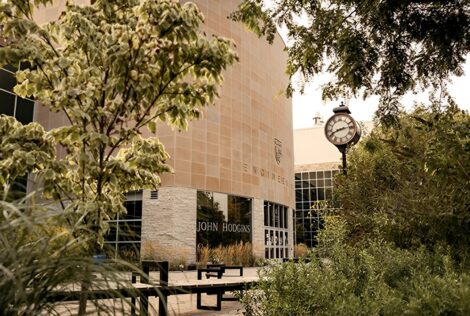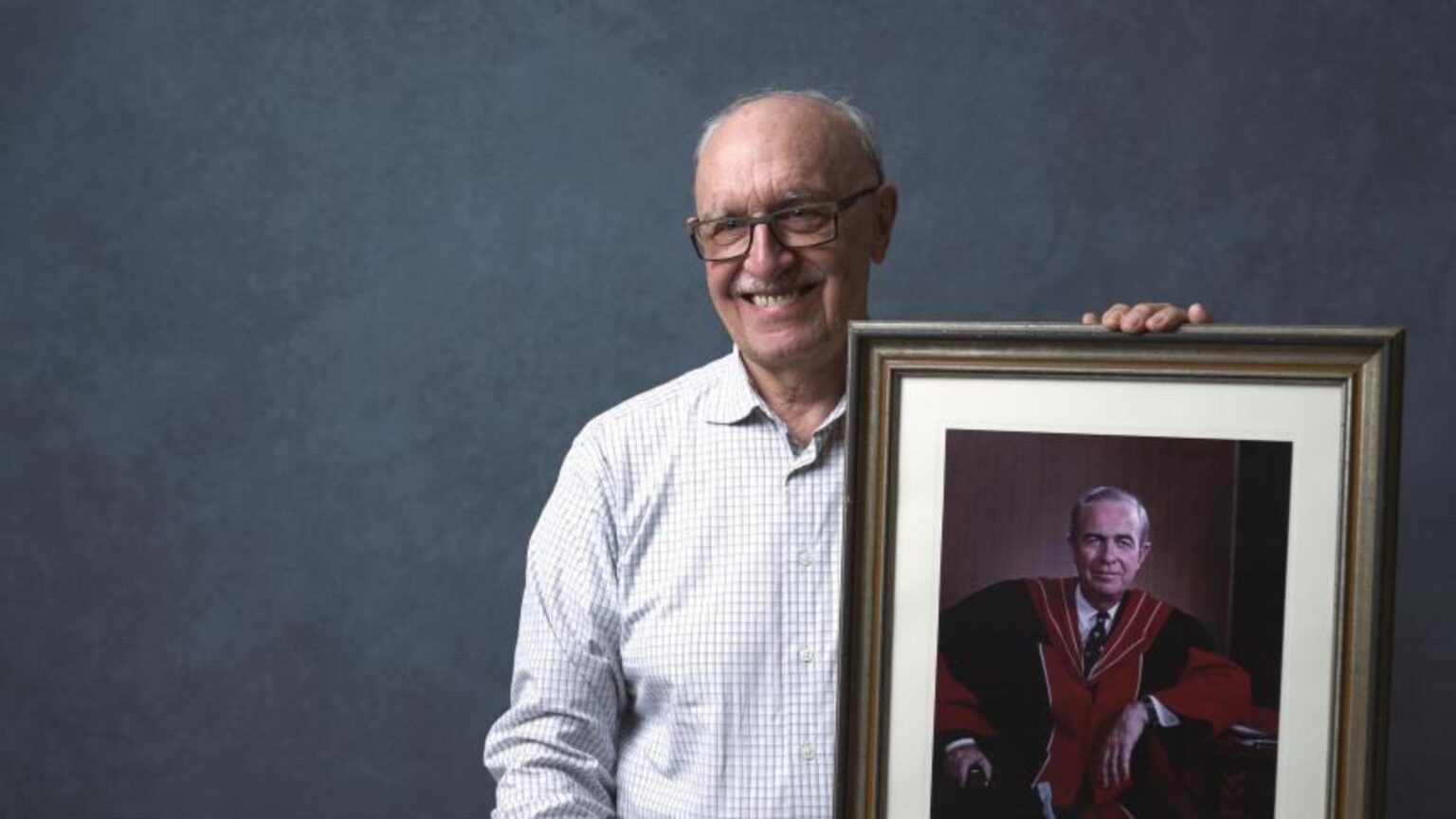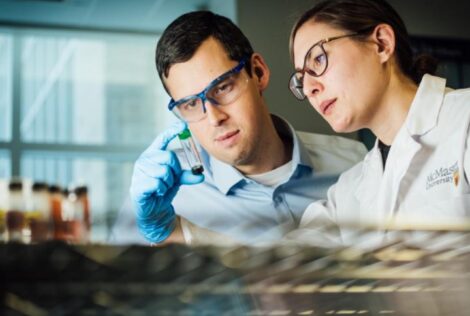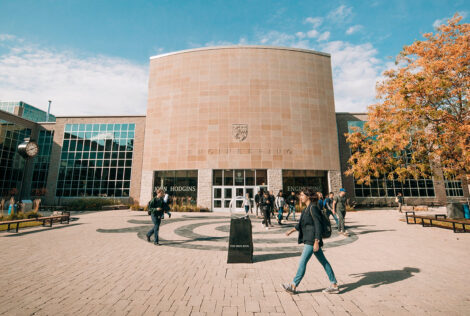

It’s the house that Jack built.
But you likely know him as John. John W. Hodgins was McMaster University’s first Dean of Engineering appointed in February 1958.
But to friends and colleagues, like Civil Engineering Professor Emeritus Art Heidebrecht, he was Jack; Jack who helped design the building that bears his name: The John Hodgins Engineering building, known as JHE.
But he was also friendly Jack who socialized with the first crop of professors in the faculty lounge back in the ‘50s and ‘60s; Jack who believed that first year engineering classes should be common to explore all disciplines; Jack who brought in guest lecturers monthly from arts, science and the community to ensure students and faculty adopted a broader view of the world and connected with their humanity; Jack who championed research and ensured science was applied and practical to suit the needs of industry.
The house and Faculty that Jack built alongside Henry Thode— then McMaster’s head of the Faculty of Science called Hamilton College — and a small but determined group of professors helped build the foundation for McMaster Engineering for the next 60 years.
“Those were foundations that set the Faculty on the right path,” said Heidebrecht, who became a Civil Engineering faculty member in 1963 and would later go to hold various roles at the University, including Dean of Engineering in the 1980s.
Jack Hodgins was born in Thorold, Ont., in 1917 and worked for the Defence Research Chemical Laboratories in Ottawa during WWII, serving as a captain. He came to McMaster from the Royal Military College of Canada in 1955 where he was professor of chemical engineering. He would often regale his McMaster students with his tales from the war during the engineering practice courses he taught.
Hodgins became director of engineering studies at McMaster, and was the founding dean of engineering, appointed in February 1958. He helped design the engineering building, which opened in October 1958, which in 1978 would officially bear his name.
For Hodgins, engineering was about more than teaching students technical skills. He championed exposing students to applied science research and opening their minds to other disciplines, including politics and the arts.
“Engineering is more than just mathematics, physics and chemistry,” said Chemical Engineering Professor Emeritus Cameron Crowe, who was the second member of his department to be hired in 1959. “Being an engineer means dealing with people and you have a life in the world at large. An interest in the humanities and the arts was viewed as an important part of that experience.”
“He was very interested in the broadening role of the engineer,” Heidebrecht said. “I think he was ahead of his time in that sense.”
Hodgins left McMaster in 1975 and, at the time of the naming ceremony in May 1978, was vice-president of Research and Environmental Technology at Domtar.
He was awarded an honorary degree from McMaster in 1978 and was a Fellow of the Royal Society of Canada and the Chemical Institute of Canada. He served as a member of the Board of Governors of Mohawk College from 1967 to 1974.
In 1983, Heidebrecht and the Faculty established the J.W. Hodgins Memorial Lecture series. In 1985, Hodgins’ wife, Jean, created a scholarship in his memory.
But it’s the building in his name that is Hodgins’ legacy on campus. He was personally involved in the building design, which was intended for 700 undergraduate and graduate students. Today, the Faculty has more than 6,000 students, and several buildings. Like its student body, the Faculty’s reputation and research reach has grown.
“He used to say he wanted McMaster Engineering to be the MIT of the North,” said Crowe, who was a student of Hodgins’ at RMC. “He aspired to excellence and influence in the engineering world. He didn’t think small.”
Jack would be proud of the house he built.


